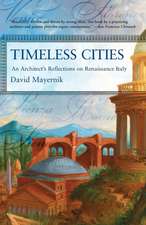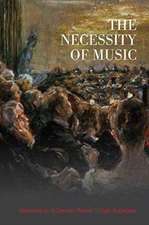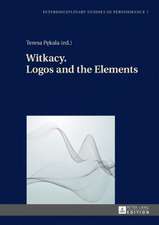The Challenge of Emulation in Art and Architecture: Between Imitation and Invention: Ashgate Studies in Architecture
Autor David Mayerniken Limba Engleză Hardback – 28 oct 2013
Din seria Ashgate Studies in Architecture
- 8%
 Preț: 390.34 lei
Preț: 390.34 lei - 28%
 Preț: 821.14 lei
Preț: 821.14 lei - 24%
 Preț: 329.91 lei
Preț: 329.91 lei - 30%
 Preț: 768.30 lei
Preț: 768.30 lei - 11%
 Preț: 362.88 lei
Preț: 362.88 lei - 14%
 Preț: 325.34 lei
Preț: 325.34 lei - 24%
 Preț: 321.88 lei
Preț: 321.88 lei - 25%
 Preț: 826.84 lei
Preț: 826.84 lei - 30%
 Preț: 776.81 lei
Preț: 776.81 lei -
 Preț: 449.41 lei
Preț: 449.41 lei - 30%
 Preț: 770.74 lei
Preț: 770.74 lei - 28%
 Preț: 823.99 lei
Preț: 823.99 lei - 22%
 Preț: 324.16 lei
Preț: 324.16 lei - 28%
 Preț: 881.28 lei
Preț: 881.28 lei - 14%
 Preț: 338.33 lei
Preț: 338.33 lei -
 Preț: 469.34 lei
Preț: 469.34 lei - 28%
 Preț: 878.01 lei
Preț: 878.01 lei - 12%
 Preț: 328.00 lei
Preț: 328.00 lei - 31%
 Preț: 767.47 lei
Preț: 767.47 lei - 18%
 Preț: 1012.89 lei
Preț: 1012.89 lei -
 Preț: 469.34 lei
Preț: 469.34 lei - 28%
 Preț: 826.84 lei
Preț: 826.84 lei - 26%
 Preț: 850.54 lei
Preț: 850.54 lei - 25%
 Preț: 710.66 lei
Preț: 710.66 lei - 13%
 Preț: 338.33 lei
Preț: 338.33 lei - 31%
 Preț: 767.67 lei
Preț: 767.67 lei - 16%
 Preț: 338.33 lei
Preț: 338.33 lei - 14%
 Preț: 340.33 lei
Preț: 340.33 lei - 26%
 Preț: 821.82 lei
Preț: 821.82 lei - 26%
 Preț: 821.53 lei
Preț: 821.53 lei - 28%
 Preț: 827.64 lei
Preț: 827.64 lei - 30%
 Preț: 768.69 lei
Preț: 768.69 lei - 28%
 Preț: 822.11 lei
Preț: 822.11 lei - 25%
 Preț: 799.76 lei
Preț: 799.76 lei - 28%
 Preț: 823.08 lei
Preț: 823.08 lei - 30%
 Preț: 769.51 lei
Preț: 769.51 lei
Preț: 826.01 lei
Preț vechi: 1144.06 lei
-28% Nou
Puncte Express: 1239
Preț estimativ în valută:
158.06€ • 169.02$ • 131.78£
158.06€ • 169.02$ • 131.78£
Carte tipărită la comandă
Livrare economică 17 aprilie-01 mai
Preluare comenzi: 021 569.72.76
Specificații
ISBN-13: 9781409457671
ISBN-10: 1409457672
Pagini: 294
Dimensiuni: 174 x 246 x 24 mm
Greutate: 0.79 kg
Ediția:New.
Editura: Taylor & Francis
Colecția Routledge
Seria Ashgate Studies in Architecture
Locul publicării:Oxford, United Kingdom
ISBN-10: 1409457672
Pagini: 294
Dimensiuni: 174 x 246 x 24 mm
Greutate: 0.79 kg
Ediția:New.
Editura: Taylor & Francis
Colecția Routledge
Seria Ashgate Studies in Architecture
Locul publicării:Oxford, United Kingdom
Notă biografică
David Mayernik is a practicing artist and architect, and an Associate Professor at the University of Notre Dame’s School of Architecture, USA.
Recenzii
' ... Mayernik makes his argument for emulation in the most persuasive and instructive way possible - that is, by doing it. This luxuriously illustrated book, predominantly - and uniquely - featuring the author’s own pencil sketches, oil paintings, frescoes, photographs, designs, and even his built buildings, is an astonishing tour de force. The road map towards the recovery of architecture, after decades of decay, is presented in this ambitious book. The road may be at times meandering and hard to discern, but the book maps it out with unassailable erudition and convincing conviction. It is a book any serious student of the arts would be well advised to read, and all who practice art or architecture should be obliged to read. ' The Institute for Sacred Architecture 'Mayernik’s meditation on emulation and its important role in imitative and inventive practice, despite the degree of its subjectivity, provides a good overview of the subject, the historical stakes, and the experience of artists: in this case by an artist working in greater proximity to the period in question than those early modern artists contemplating their antique predecessors.' Renaissance Quarterly 'As a timely response to a hot topic today, David Mayernik’s new book deftly puts to rest the question in architecture and art of Imitation versus Invention that currently vexes so many. This book, like a definition of tradition itself, is set squarely in the present, looks deeply into the past with rare illumination, and confidently guides us to a beautiful future.' Traditional Building Magazine
Cuprins
Introduction; 1: On Imitation; 2: On Emulation: A Part of Imitation, or Something Else Again?; 3: The Theater of Aspirations: Apprenticeship as Performance; 4: An Atelier of Rivals: Constructive Competition; 5: The Mosaic of History: Tesserae and Continuum; 6: Metamorphosis: Found in Translation; 7: On Invention; 8: The End of Emulation; 9: Coda: The Case for Emulation
Descriere
Mayernik argues that it was the absence of a coherent understanding of emulation that fostered the fissuring of artistic production in the later eighteenth century into those devoted to copying the past and those interested in continual novelty, a situation solidified over the course of the nineteenth century and mostly taken for granted today. This book is a unique contribution to our understanding of the historical phenomenon of emulation, and perhaps more importantly a timely argument for its value to contemporary practice.



















